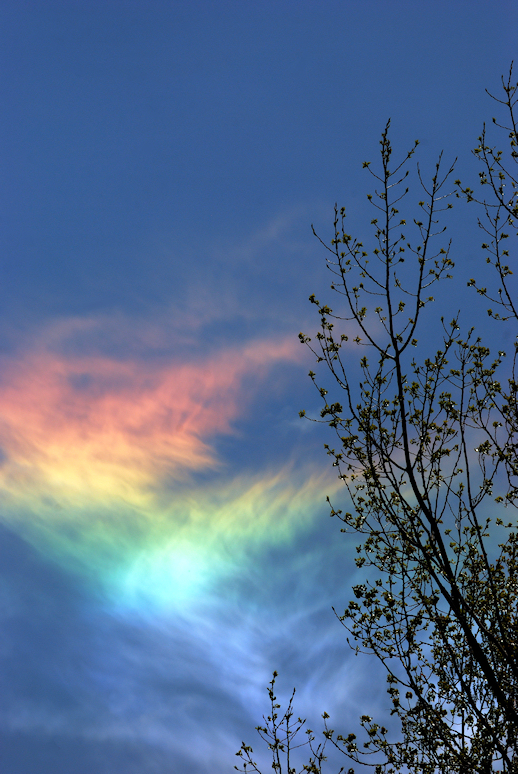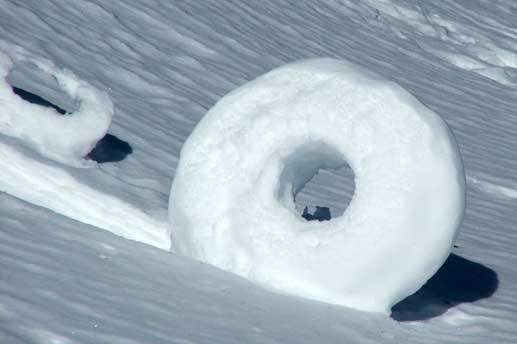BfHmbbNCYAAX95w.png
A snow roller is a rare meteorological phenomenon in which large snowballs are formed naturally as chunks of snow are blown along the ground by wind, picking up material along the way, in much the same way that the large snowballs used in snowmen are made. They can be as small as a tennis ball, but they can also be bigger than a car.
Unlike snowballs made by people, snow rollers are typically cylindrical in shape, and are often hollow since the inner layers, which are the first layers to form, are weak and thin compared to the outer layers and can easily be blown away, leaving what looks like a doughnut or Swiss roll.
The following conditions are needed for snow rollers to form:
- There must be a relatively thin surface layer of wet, loose snow, with a temperature near the melting point of ice.
- Under this thin layer of wet snow there must be a substrate to which the thin surface layer of wet snow will not stick, such as ice or powder snow.
- The wind must be strong enough to move the snow rollers, but not strong enough to blow them apart.
- Alternatively, gravity can move the snow rollers as when a snowball, such as those that will fall from a tree or cliff, lands on a steep hill and begins to roll down the hill.
Because of this last condition, snow rollers are more common in hilly areas. However, the precise nature of the conditions required makes them a very rare phenomenon.







